|
| |
Jazz Harmonica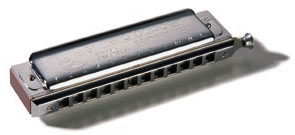
A harmonica is a
free reed musical
wind instrument (also known, among other things, as a mouth
organ or mouth harp, French harp, tin sandwich, lickin' stick,
blues harp, simply harp, or "Mississippi saxophone"), having
multiple, variably-tuned
brass
or
bronze
reeds, each secured at one end over an airway slot of like
dimension into which it can freely vibrate, thus repeatedly
interrupting an airstream to produce
sound.
Unlike most free-reed instruments (such as
reed organs,
accordions and
melodicas), the harmonica lacks a keyboard. Instead, the
player selects the notes by placement of their mouth over the
proper airways, usually made up of discrete holes in the front
of the instrument. Each hole communicates with one, two or a few
reeds. Because a reed mounted above a slot is made to vibrate
more easily by air from above, reeds accessed by a mouthpiece
hole often may be selected further by choice of breath direction
(blowing, drawing). Some harmonicas (primarily
chromatic harmonicas)
also include a spring-loaded button-actuated slide that, when
depressed, redirects the airflow.
 Jean
Baptiste 'Toots' Thielemans
Nicknamed "Toots" after musicians Toots Mondello and Toots Camarata Jean
Baptiste 'Toots' Thielemans
Nicknamed "Toots" after musicians Toots Mondello and Toots Camarata
Toots Thielemans plays exclusively on the Hohner,
Chromonica
Models : Toots Thielemans Mellow Tone and Toots Thielemans Hard Bopper.
 Born
: Brussels, Belgium 1922, Immigrated : USA 1952. - Played accordion at age 3,
- Started playing harmonica as a hobby, - First guitar won on a bet, - "Hooked"
on Jazz during German occupation, - First idol : Django Reinhardt Born
: Brussels, Belgium 1922, Immigrated : USA 1952. - Played accordion at age 3,
- Started playing harmonica as a hobby, - First guitar won on a bet, - "Hooked"
on Jazz during German occupation, - First idol : Django Reinhardt
- Early influence : Charlie Parker, - First international break through :
Joining Benny Goodman, on European concert tour in 1950
- Early US jobs : member of Charlie Parker's All Stars in Philadelphia; George
Shearing Quintet; ...
- Composed "Bluesette", 1962 - Originated new sound : Whistling and guitar in
unison, - Whistler for commercials : Best known "Old Spice"
- Harmonica soloist for film scores: Midnight Cowboy, The Getaway, Sugarland
Express, Cinderella Liberty, Turks Fruit, Jean de Florette , ...
- Concerts and recordings with names like George Shearing, Ella Fitzgerald,
Quincy Jones, Bill Evans, Jaco Pastorius, Natalie Cole, Pat Metheny, Paul
Simon, Billy Joel, ...- Harmonica Soloist - TV : Sesame Street - Perennial
winner of Down Beat readers and critics poll
"miscellaneous instruments" - Favourite compliment (from the late
Clifford Brown) :
"Toots, the way you play the harmonica they should not call it a
miscellaneous instrument"
" I
can say without hesitation that Toots is one of the greatest musicians of
our time. On his instrument he ranks with the best that jazz has ever
produced. he goes for the heart and makes you cry. We have worked together
more times than I can count and he always keeps me coming back for more ..."
from Quincy Jones' liner
notes
Q's Jook Joint, 1995
Born in Brussels, Belgium in
1922, Jean "Toots" Thielemans was raised on the Swing-Era stylings of gypsy
guitarist Django Reinhardt and the father of modern amplified jazz guitar,
Charlie Christian. At age three, he played accordion in his parents'
sidewalk cafe. Not pushed towards music as a career, Toots planned to study
mathematics at Brussels University. During the German occupation of Belgium
during World War II, Thielemans buys a harmonica and discovers jazz. He soon
receives a guitar from a friend and learns to play from listening to Django
Reinhardt's discs. During the late 1940s, he gravitated to American bebop.
In 1949, Benny Goodman heard a recording by him and it was his first
international break. Arriving in America in 1951, Toots had one memorable
week-long gig with Charlie Parker's All-Star band playing alongside Miles
Davis and Milt Jackson. From late 1952, until the middle of 1959, Thielemans
played steadily with pianist, George Shearing. He broke through to an
appreciative worldwide audience in 1963, with his composition, "Bluesette,"
an engaging jazz waltz that popularized his signature technique of whistling
the melody simultaneously with his single-stringed guitar lines. The tune
has since become a jazz classic, recorded innumerable times by musicians all
over the world. By now, Toots's harmonica is familiar to moviegoers, jazz
and pop fans and mainstream audiences. His haunting sound can be heard on
the film scores of "Midnight Cowboy," "The Sugarland Express" and "The
Getaway." In addition to "Q," he's recorded with the late Bill Evans and
Ella Fitzgerald, Paul Simon, Shirley Horn, Pat Metheny and Billy Joel. His
credits even include an endearing harmonica solo on the opening theme from
Sesame Street. A perennial poll winner, Toots has also experimented with the
sounds of Brazil via his critically-acclaimed Brasil Project; pairing him
with some of the most accomplished composers and singers in Brazilian music.
The band provides a warm, improvisational backdrop for his beautiful
harmonica melodies. When once asked by a journalist to describe where he was
musically, Toots responded with the classic line, "somewhere between a smile
and a tear!" Let Toots's romantic playing take you there, too…
Bluesette - Toots with Stevie Wonder
Harmonica
Links
An Irish Jazz Harmonica
Player - of very high renown but so little to read about till I found this
Ray Preston - whom one could
call a really accomplished jazz chromatic player.
Ray Preston Making Whoopee
Brendan Power on Ray Preston.

A rare
opportunity to hear harmonica in the jazz genre, as performed by Ireland's
leading exponent Ray Preston, who is steadfast to the 'bop' tradition as
evidenced by his repertoire, which includes compositions by Ellington, Miles
Davis, Clifford Brown, Toots Thielemans in addition to many of the great
popular songwriters. Ray Preston has performed with ex-Basie trombonist, the
late Al Grey, Spike Robinson, harmonica player Hendrik Meurkens, Bobby
Wellins, Bobby Watson, and many of Ireland's top musicians.
They call Ireland the
Emerald obviously being the Isle. That's because it's a green yardstick.
It's a green and very pleasant land - but it small number, could equally
well refer to the reflecting the wealth of musical gems to be found there if
you listen with an ear to the ground. One of the rarest and finest I've
discovered is jazz harmonica master Ray Preston. It was Mick Kinsella who
introduced me to Ray, roughly 10 years ago when I was touring. I got him and
Mick up for a jam on a simple blues, and was immediately struck by the sheer
sophistication and intelligence of Ray's playing. He made that three chord
12 bar sound very exotic, and I didn't have a clue what he was doing! Since
then we have kept in touch, and Ray has kindly given me several recordings
of his playing, taken from sessions or live gigs. As my interest and
appreciation of jazz has grown, so has my admiration for Ray Preston's
playing. I often listen to those records whilst in my workshop, and have
started to think it's really a pity a lot more people don't know about this
man.
Judging by the extant recordings, I'd guess there are probably fewer than
twenty people in the world difficulty of this undertaking. Dubliner Ray
Preston is undoubtedly one of the finest of the best. Yet he's virtually
unheard of outside the Irish jazz scene. I called him up for the NHL
magazine, and asked him about his career. Ray said he started playing
harmonica as a kid, diatonic at first and then chromatic. He was interested
in popular jazz, Glenn Miller, Swing, Dixieland etc. However, at the age of
14 he heard a version of Tenderly by Oscar Peterson, and later the same tune
by bebop trumpeter Clifford Brown. He was blown away with the man's playing,
and started to work on getting a similar sound and approach on the chromatic
harmonica. He had found his guru and his musical direction.
However, he says that back in the 60s and 70s Ireland was a very puritanical
place, and jazz was disapproved of as a subversive influence by the powers
that be. The few jazz musicians like Ray felt quite persecuted and had to
conduct an undercover crusade to get the music heard and accepted.
In recent times things have opened up a lot. Now 64, Ray has done all there
is do in the Irish jazz scene, regularly appearing on national television
and often featuring at the Cork jazz festival. He has guested with many
visiting musicians like Spike Robinson and Bobby Watson (USA), Digby
Fairweather, Bobby Wellins, Michael Garrick, Alan Barnes, Brian Dee and Dave
Green (UK).
I feel an affinity for Ray because, like me, he is a self-taught ear player
who doesn't read music. Also like myself, he plays several chromatics in
different keys, an approach frowned on by many classical and jazz
harmonicists. However, for Ray it's the music that comes out of his "horn"
(as he calls it, in jazz parlance) that matters, and for him using different
harps is the best way to achieve the sound he's after.
He uses mostly Hohner 270s, but latterly has developed a liking for the CX12
as well. He uses standard chroms in Solo tuning, and tends to play in the
home key of the instrument: in C on a C chrom, Bb on a Bb chrom etc etc.
This gives him a very fluid and relaxed style, less quirkily harmonica-istic
than Toot's and closer to the phrasing of the trumpet and sax players he
listens to. Like Toots, Ray eschews overdone hand effects, preferring a Ray
meets Toots approach with a very pure and unaffected sound with a light
throat vibrato.
One thing that you especially notice about Ray's playing is his relaxed
sense of time. Unlike like the late Larry Adler and other chromatic
virtuosos who dabble in jazz but never really swing, Ray Preston is the real
deal. You just have to listen to a few notes to hear that his playing is
absolutely, authentically jazz. The importance of having good time in jazz
is something he was keen to stress. It Don't Mean a Thing if it Ain't Got
That Swing could have been written for Ray.
Another reason Ray's playing inspires me is because he plays highly
sophisticated jazz lines without having a clue about formal music theory and
harmony! He hears it all instinctively after many years of listening, and
it certainly works for him. It gives me hope! - and shows, once again, there
is more than one way to skin a cat.
Finally I asked Ray when he is going to get that wonderful playing down on a
CD so the wider world can appreciate his playing. He says he does have
plans, but is working on getting the finance and the right setting. Let's
hope it doesn't take too long. We have some of his music on the magazine web
page. April 2005
http://www.harmonica.co.uk/magazine.htm
- Brendan Power
UK-based
New Zealander Brendan Power is acknowledged by many as one of the most
creative, skilled & versatile harmonica players around today. Equally at
ease on both the earthy Blues Harp as well as the sophisticated
Chromatic Harmonica, he tunes them to his own scales to create a highly
original style.
He has recorded fifteen
solo CDs to date, in a wide variety of musical genres.
Since he moved to Britain in 1992,
Brendan’s eclectic skills and sympathetic ear have made him an in-demand
session player, leading to live and recording work with artists such as
Sting, James Galway, Van Morrison, Paul Young, Shirley Bassey, John
Williams and many more.
His playing is also heard on many Hollywood movie soundtracks and UK TV
series. He’s featured on the Jools Holland Show and toured worldwide,
performing in venues such as China’s Great Hall of the People and The
Kremlin. In addition to his Pop, Jazz & Blues skills, Brendan is
an expert player of Irish traditional music (winning the 1993 All
Ireland Title), and performed for three years as soloist in the
Riverdance Show. A respected harmonica technician & customiser.
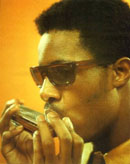 Stevie
Wonder’s work on “Got to Spend A Little More Time with You” is classic
Wonder harmonica, and among the best he has ever recorded. The piece is
played in F# major and G major on a C chromatic harmonica, great keys for
Wonder’s favourite harmonica tricks. (F# was the key of Wonder's classic hit
"For Once in My Life", and of its extraordinary, exuberant, much-imitated
harmonica solo.) All the usual Wonder devices are there: a heavy reliance on
the major pentatonic scale; plenty of little turns and trills courtesy of
the chromatic harmonica slide; a keen sense of line; a subtle feel for how a
single carefully chosen note can imply harmony; nifty articulations that
here include flutter-tonguing; and a big, gorgeous chromatic harmonica tone.
He and Taylor are clearly inspired by each other, and the song is a fitting
vehicle for Wonder, with its R&B groove and jazzy chord changes. Any fan of
Wonder’s harmonica playing will be glad to have the record for this cut
alone. Stevie
Wonder’s work on “Got to Spend A Little More Time with You” is classic
Wonder harmonica, and among the best he has ever recorded. The piece is
played in F# major and G major on a C chromatic harmonica, great keys for
Wonder’s favourite harmonica tricks. (F# was the key of Wonder's classic hit
"For Once in My Life", and of its extraordinary, exuberant, much-imitated
harmonica solo.) All the usual Wonder devices are there: a heavy reliance on
the major pentatonic scale; plenty of little turns and trills courtesy of
the chromatic harmonica slide; a keen sense of line; a subtle feel for how a
single carefully chosen note can imply harmony; nifty articulations that
here include flutter-tonguing; and a big, gorgeous chromatic harmonica tone.
He and Taylor are clearly inspired by each other, and the song is a fitting
vehicle for Wonder, with its R&B groove and jazzy chord changes. Any fan of
Wonder’s harmonica playing will be glad to have the record for this cut
alone.
"Eivets Rednow"-
Eivets Rednow, or Stevie Wonder spelled backwards, is a little-known 1968
instrumental album that features Stevie playing chromatic harmonica. Great
tone, great timing, great playing, good price. The overall production is a
bit on the "smaltzy" side, but any fans of Stevie's playing will enjoy this
album
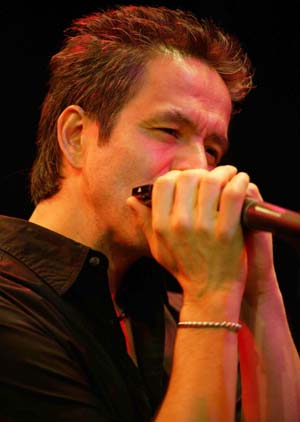 Tollak
Ollestad started with the blues
and a deep love and fascination for the great harp players from Chicago,
Little Walter, Charlie Musselwhite and James Cotton among others and the
country blues players too, Sonny Terry and Taj Mahal etc. Then I became
consumed with the harmonica of Stevie Wonder and also Toots Thielemans. The
Chromatic harmonica to be specific. There are many great players of
this instrument, but for me Stevie is still the pinnacle of beautiful sound,
phrasing and feel that no-one's ever truly duplicated or even come close to.
Here's a partial rundown of my history with this deceptively unassuming
little instrument that I continue to discover more about all of the time.
Played in the theme for the 90's
television show- Northern Exposure Tollak
Ollestad started with the blues
and a deep love and fascination for the great harp players from Chicago,
Little Walter, Charlie Musselwhite and James Cotton among others and the
country blues players too, Sonny Terry and Taj Mahal etc. Then I became
consumed with the harmonica of Stevie Wonder and also Toots Thielemans. The
Chromatic harmonica to be specific. There are many great players of
this instrument, but for me Stevie is still the pinnacle of beautiful sound,
phrasing and feel that no-one's ever truly duplicated or even come close to.
Here's a partial rundown of my history with this deceptively unassuming
little instrument that I continue to discover more about all of the time.
Played in the theme for the 90's
television show- Northern Exposure
also currently featured in the between segment music on Good Morning
America. I played for a couple of episodes of Drew Carey.
Also was featured in the music for the Lifetime TV show-
Any day now
CD's I've played solos on include- Natalie Cole-
"Ask a Woman Who Knows", Al Jarreau- "Tomorrow Today",
Earth, Wind and Fire- "The Promise", Brian McKnight-
"Bethlehem", Bebe Winans- "Live And Up Close", Gino
Vanelli- "Yonder Tree", Dave Grusin- "Two For The
Road", Billy Idol- "Best Of", Christopher Cross-
"Walking In Avalon", Brenda Russell- "Soul Talkin",
John Tesh- "Avalon", Northern Exposure soundtrack....
and many other wonderful artists not mentioned here.
I've played live solos with Don Henley on his VH-1
storytellers special, Michael McDonald in concert,
Kenny Loggins on the Tonight show with Jay Leno
and in concert, Chet Atkins on the Tonight show,
Jewel in concert and
Ambrosia in concert among others.
I'm also featured
prominently in a new contemporary Jazz group called Shapes,
produced by Jimmy Haslip at
www.shapesmusic.com ,a fun and
sometimes breath-taking high wire act playing some very intriguing and
challenging music with some outstanding musicians.
Other things new and in the pipeline- solos on- the latest CD of mostly Jazz
standards by Al Jarreau- "Accentuate the Positive" (see
below), the latest by Melissa Manchester- "When I Look Down
That Road" (also BG vocals), the Xmas CD by Will Downing,
the upcoming CD from Amy Holland, wife of Michael
McDonald, and a wonderful recording artist who's returni! ng with a
new CD after a very long absence. And a solo in a live concert DVD with
Andrea Bocelli produced by David Foster
called "Amore
under the desert stars" filmed for
PBS Great performances in Las Vegas and is being
broadcast during the '06 season.Although
once only the domain of chromatic harmonica players, new harmonica
technologies and techniques like overblows have made it possible for
diatonic players to make great music in the world of jazz.
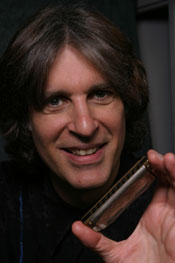 Howard
Levy Howard
Levy is a musician without limits. His musical adventures include journeys
into jazz, pop, rock, world music, Latin, classical, folk, blues, country,
theatre, and film. He has appeared on hundred of cd’s, won a Grammy (1997),
won a Joseph Jefferson Award (1986) for Best Original Music for a Play, and
has performed many times on American and European television and radio.
Universally acknowledged as the world’s most advanced diatonic harmonica
player, Howard developed a fully chromatic style on the standard 10 - hole
diatonic harmonica, revolutionizing harmonica playing and taking the
instrument into totally new territory. He is also an accomplished pianist
and composer, and plays many other instruments as well, including flute,
ocarina, mandolin, saxophone, and percussion. Howard
Levy Howard
Levy is a musician without limits. His musical adventures include journeys
into jazz, pop, rock, world music, Latin, classical, folk, blues, country,
theatre, and film. He has appeared on hundred of cd’s, won a Grammy (1997),
won a Joseph Jefferson Award (1986) for Best Original Music for a Play, and
has performed many times on American and European television and radio.
Universally acknowledged as the world’s most advanced diatonic harmonica
player, Howard developed a fully chromatic style on the standard 10 - hole
diatonic harmonica, revolutionizing harmonica playing and taking the
instrument into totally new territory. He is also an accomplished pianist
and composer, and plays many other instruments as well, including flute,
ocarina, mandolin, saxophone, and percussion.
In 2003, Howard released a jazz duo cd with
Naumberg Award-winning pianist Anthony Molinaro, entitled The Molinaro/Levy
Project “Live”. In 2002, he performed “On the Other Side...” (a triple
concerto composed for him, a clarinettist and an accordionist) with The
Bavarian State Radio Orchestra in Munich, Germany. In 2001, Howard was
commissioned by The Illinois Philharmonic to compose a Harmonica Concerto,
the first ever written for diatonic harmonica. Since the debut, he has
performed it 9 times, with more performances scheduled.
Max
Geldray, Europe's jazz harmonica player, died peacefully at
his home in Palm Springs, California.
He was born in 1916 in Amsterdam, The Netherlands. His
father played the piano by ear and, at a very young age, Max followed his
example. Max loved to listen to jazz on the radio and Louis Armstrong
became his idol. At age sixteen, he heard a chromatic harmonica on the
radio.
Trying one at the local music shop, he was soon playing
jazz on it and, a year later, formed a harmonica quartet with three other
boys. He broadcast from Radio Hilversum and, in 1936, was invited to play as
a soloist at Windsor Castle for the British Royal Family. In France he
became a featured player with the very popular Ray Ventura Orchestra which
appeared in two films one of which was "Tourbillon de Paris". When the
German Army invaded France in May 1940, Max escaped to England and served,
throughout the war, in the Princess Irene Brigade of the Dutch Army in
Britain. He was injured during the Normandy landings and, forty years later,
received four medals from Holland for his service. As soon as Amsterdam was
liberated, Max went to find his parents only to be told by neighbours that
his parents and his twelve-year-old sister, Xaviere, had been sent to German
death camps. They were never heard from again.
Max decided to settle in England and obtained British
citizenship. He was soon broadcasting for the BBC and, in 1950, teamed up
with little known comedians Peter Sellers, Harry Secombe, Spike Milligan and
Michael Bentine for a radio show called "Crazy People". The show became the
popular 1950's "The Goon Show" and Max Geldray became a household name. Goon
with the Wind.
After the show's nine-year run, Max went on a world tour
returning via California. He was so impressed with California's sunshine and
easy way of life that he returned there permanently. Soon after his arrival,
he met a lady who became Mrs Susan Geldray and he became a loving stepfather
to Susan's three children, Judy, Timmy and Holly and some years later,
father to their son Philip. In his later years, Max became a counsellor at
the Betty Ford Detoxification Centre at the Eisenhower Hospital in Rancho
Mirage. He was also a favourite performer every year for ten years at the
popular "Jazz Without Booze" concerts that included some of Hollywood's best
talents. Max always carried his harmonica in his pocket and loved to play
wherever he found other jazz musicians. He is survived by his wife Susan,
his son Philip, stepdaughters Judy and Holly and several grandchildren.
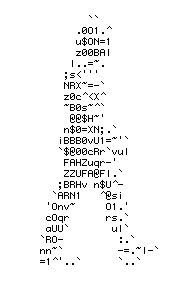 The
Chiltern Hundreds Jazz
Festival - yes it is possible - given Arts Grants and Corporate support.
There are sufficient venues both in the Town Centre and the surrounding Villages
to create a Major Annual Event (even Bicester organises one) - If you are
interested then declare here in what capacity you are prepared to assist.
Thame Jazz Festival Support The
Chiltern Hundreds Jazz
Festival - yes it is possible - given Arts Grants and Corporate support.
There are sufficient venues both in the Town Centre and the surrounding Villages
to create a Major Annual Event (even Bicester organises one) - If you are
interested then declare here in what capacity you are prepared to assist.
Thame Jazz Festival Support
|


 Born
: Brussels, Belgium 1922, Immigrated : USA 1952. - Played accordion at age 3,
- Started playing harmonica as a hobby, - First guitar won on a bet, - "Hooked"
on Jazz during German occupation, - First idol : Django Reinhardt
Born
: Brussels, Belgium 1922, Immigrated : USA 1952. - Played accordion at age 3,
- Started playing harmonica as a hobby, - First guitar won on a bet, - "Hooked"
on Jazz during German occupation, - First idol : Django Reinhardt



 The
Chiltern Hundreds Jazz
Festival - yes it is possible - given Arts Grants and Corporate support.
There are sufficient venues both in the Town Centre and the surrounding Villages
to create a Major Annual Event (even Bicester organises one) - If you are
interested then declare here in what capacity you are prepared to assist.
The
Chiltern Hundreds Jazz
Festival - yes it is possible - given Arts Grants and Corporate support.
There are sufficient venues both in the Town Centre and the surrounding Villages
to create a Major Annual Event (even Bicester organises one) - If you are
interested then declare here in what capacity you are prepared to assist.